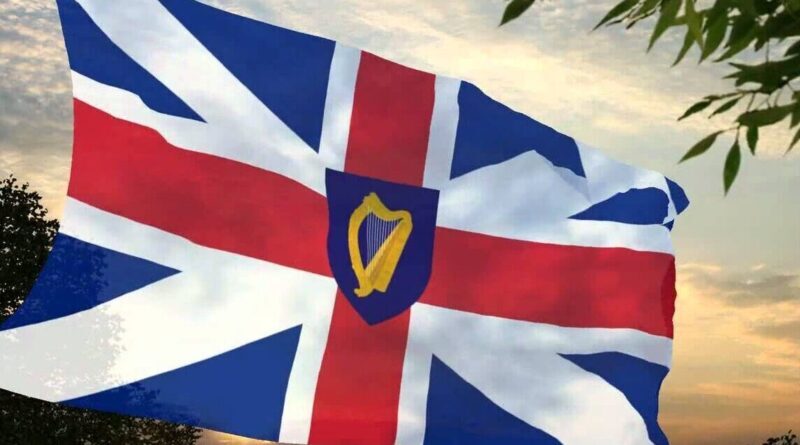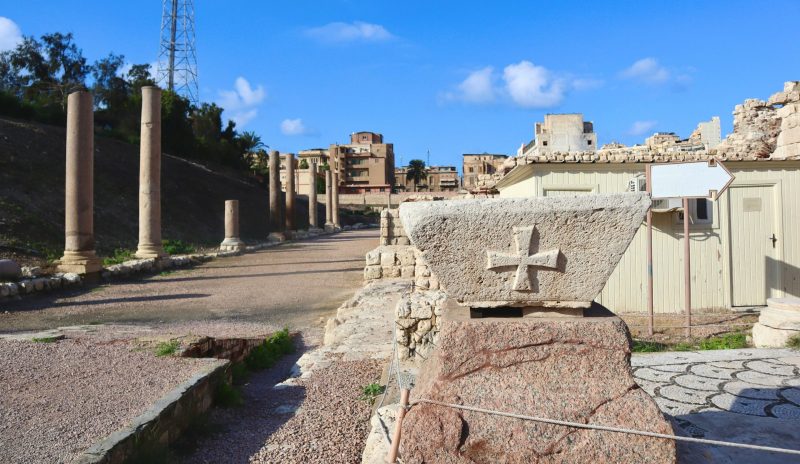The Battle of Naseby in Northamptonshire on 14 June 1645 was one of the most important battles of the English Civil Wars (1642-1651). The Royalists, led in person by King Charles, were soundly defeated by the Parliamentarians’ numerically superior New Model Army. Naseby was not the end of the war, but the destruction of the king’s infantry meant a Parliamentary victory was now inevitable.
This article was written by Mark Cartwright and originally published by World History.
The Civil War So Far
King Charles I of England (r. 1625-1649) had clashed with Parliament, particularly over money and religious reforms for years, and, finally, a civil war broke out in 1642. The ‘Roundheads’ (Parliamentarians) and ‘Cavaliers’ (Royalists) met in over 600 battles and sieges over the duration of the conflict. From the start, London, the southeast, and the Royal Navy were in the Roundheads’ hands while the king controlled the western and northern parts of England.
1644 did not go well for the Royalists. A heavy defeat at the Battle of Marston Moor near York on 2 July 1644 was followed by the loss of York later the same month. The Parliamentarians now controlled the entire north of England except for a few isolated castles, and they had found themselves a gifted new cavalry commander, one Oliver Cromwell (1599-1658). The king still controlled the southwest, and the Roundheads lost the chance to inflict perhaps a final defeat on their opponents at the indecisive Second Battle of Newbury on 27 October 1644. The lack of unity amongst the Roundhead commanders led to a shake-up of Parliament’s army and the creation of a new professional force with a new command structure. This was the New Model Army; its overall leader was Sir Thomas Fairfax (1612-1671) with Cromwell as his second-in-command..
In the second week of May 1645, Charles led an army to relieve the siege of Chester. Thomas Fairfax took the opportunity to lead the New Model Army to besiege Oxford, then the Royalist capital and now underdefended. At the end of May, the Royalist army besieged Leicester, hoping to divert Parliamentarian forces from Oxford to the south. Leicester was captured on 31 May, and Fairfax did indeed respond by marching his army northwards. King Charles then made the fatal error of dividing his forces. Two Royalist cavalry groups left, one for the southwest and the other for the north of England, leaving Fairfax with a vastly superior force if he could find the king before he, too, departed. The king did not mobilise in time, spurning a last chance on the evening of 13 June to leave Northamptonshire and fight another day. On Saturday 14 June, the two armies, each occupying a low ridge, faced each other across a wide stretch of relatively open field country just to the north of the village of Naseby with its useful landmark of a windmill.
Troop Dispositions
The Royalists were commanded by Charles himself with his nephew Prince Rupert (1619-1682) and George, Lord Digby (1612-1677). Their army consisted of between 8,000 and 10,000 troops, a little more than half of which was cavalry. Fairfax, meanwhile, commanded some 14,000 to 15,000 men (with a little over 6,000 of these being cavalry). Both armies had the usual cavalry on each wing and the infantry troops arranged in two rows of squares like a chessboard in the centre of the battlefield. The Parliamentarian dispositions may have been more compacted given the natural features of the terrain on their side of the battlefield and their greater numbers. Both sides would have wanted to avoid the parish border hedges on one side and the boggy ground caused by two streams on the other. Each infantry block was composed of a central core of pikemen with flanks of musketeers. The job of the pikemen was to protect the musketeers, and at this stage in the war, the typical ratio was one pikeman to every three musketeers.
Engagement
Battle commenced around 10 am. First, there was an unusually short artillery barrage, perhaps because the Royalists were not yet ready and the Parliamentarian commanders did not generally favour this method of attack anyway. It may also have been that the uneven terrain meant sighting for artillery was poor. There then followed the inevitable clash of men at arms.
The Royalist cavalry led by Prince Rupert gained success on the right wing, driving the left wing of the Parliamentary cavalry towards Naseby. This wing of the Parliamentarian cavalry was led by Henry Ireton (1611-1651) who had only a limited experience of commanding large bodies of troops. Early on in the battle, Ireton was wounded and even briefly captured by the enemy. Meanwhile, in the centre of the battlefield, the Royalist infantry, led by Jacob Astley, initially outperformed the numerically superior Parliamentary infantry, led by the vastly experienced Philip Skippon (c. 1600-1660), forcing them to lose ground. This may actually have been a disadvantage for the Royalist infantry as they moved forward and exposed their flanks to the wings of the Parliamentary army, particularly as they were numerically inferior. Caught on three sides, the Royalist infantry was obliged to withdraw from the pocket, which disrupted their formation and exposed the men even further.
Crucially, Oliver Cromwell’s cavalry on the right wing of the Parliamentarian army crushed the opposing cavalry, led by Sir Marmaduke Langdale (1598-1661), forcing them to flee the field completely. Cromwell then led his men to attack the Royalist infantry in the centre. Prince Rupert, not for the first time, was unable to match Cromwell’s tactics since his cavalry became embroiled in a skirmish with the Parliamentarian baggage train far behind the enemy lines. Whether Rupert was personally involved here or by this time had returned to the king’s side to command his own infantry regiment, the Bluecoats, is disputed. Rupert’s cavalry did not manage to completely drive the Parliamentarian cavalry (their left wing) from the field, and those that remained assisted Cromwell in attacking the opposition infantry at their now fully exposed flanks.
The Royalist infantry was now being overwhelmed by Fairfax’s infantry from the front as the latter moved steadily forwards. Here in the heart of the engagement, the fighting was intense and chaotic, with musketeers obliged to use the butts of their weapons after they ran out of ammunition or lost their volley-fire formations, at least according to the official Royalist account:
Presently our forces advanced up the hill, the rebels only discharging five pieces [cannons] at them, but overshot them, and so did their musketeers. The foot on either side hardly saw each other until they were within carabine shot, and so only made one volley; ours falling in with sword and butt end of the musket did notable execution…
(Hunt, 157).
Parliament’s Victory
By the early afternoon, the numerical superiority of the Parliamentarians began to tell, and Charles was obliged to throw in his reserves in a last-ditch attempt to turn the tide of the battle. The Royalist account notes that Charles was even prepared to join the fray:
The king, as was said before, was even upon the point of charging the enemy, in the head of his guards, when the Earl of Carnwath, who rode next to him – on a sudden laid his hand on the bridle of the king’s horse, and swearing two or three full-mouthed Scots’ oaths said, “Will you go upon your death in an instant?” and, before his majesty understood what he would have, turned his horse round.
(Hunt, 158)
The Royalist forces were no longer operating under any sort of command, and even the return of Rupert’s cavalry was too little too late. The Royalist infantry had long since broken up its formation, and isolated groups were now fighting a rearguard action, often one group providing cover fire while another moved back. Fairfax first allowed his own infantry and cavalry to reassemble and then steadily moved across the battlefield with his army presenting a wall of men and musket fire. The fighting remained fierce – both Fairfax and Cromwell lost their helmets during the battle – but a rout ensued, and many of the fleeing Royalists were pursued for several miles. The Parliamentarians had finally won a great and decisive victory. The Royalist infantry was destroyed, and thousands of prisoners were captured. Less glorious was the unwarranted attack on around 1,500 women, most likely wives and prostitutes who were part of the Royalist baggage train. Incorrectly thinking the women were Irish Catholics, when they were, in fact, mostly Welsh, around 100 were killed while many others were maimed with cuts to their faces.
Aftermath
An even more valuable capture than prisoners at Naseby was the king’s personal writing cabinet. Documents in this cabinet confirmed what had up to that point been only a terrible suspicion: the king was willing to strike a deal with Irish rebels in order to have Catholic troops for his army in England. There was also evidence that Charles sought the help of the pope and that his earlier overtures of negotiation and conciliation to end the war had been entirely hollow. The propaganda value of these secret papers was not squandered, and many were printed for public attention in such collections as the pamphlet distributed in London shortly after the battle with the alluring title: The King’s Cabinet Opened: Or Certain Packets of Secret Letters and Papers, Written with the King’s Own Hand.
The king had managed to escape Naseby and flee first to Wales and then northwards, but now there was no chance of any negotiated settlement to the conflict. As a final blow to the Royalist cause that fateful summer, Fairfax recaptured Leicester on 18 June and so re-established Parliamentarian control of the Midlands. Bristol was captured for Parliament in September 1645. The Royalists were in a desperate situation, but they were not willing to give up yet. The very division of his army that had caused Charles’ force to be so outnumbered at Naseby before the battle began now gave him hope for the future and yet another army was raised from these disparate pieces. It seemed that no matter how many battles the Parliamentarians won, as long as Charles was alive, or at least free, then the civil war would drag on indefinitely, even if the Royalists could no longer match them in the field.





